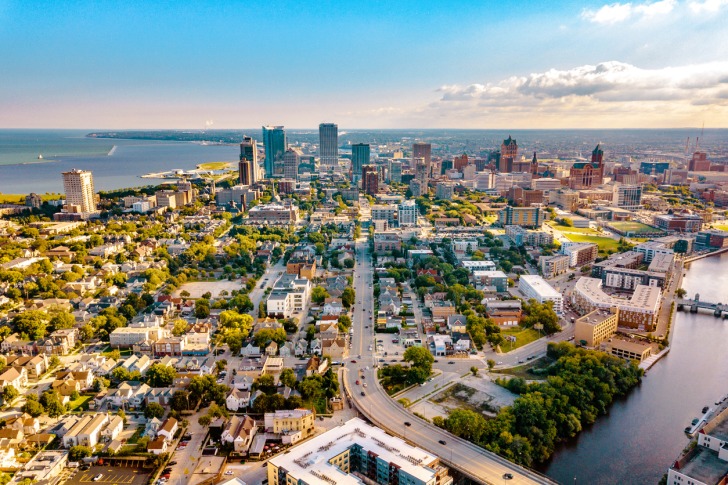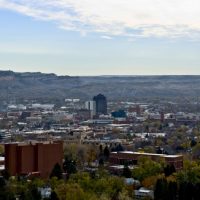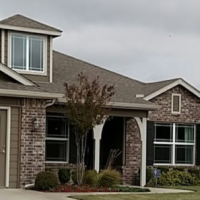Milwaukee is a city of more than 500,000 people on Lake Michigan.
It has a fairly low cost of living, with low-cost housing which tends to attract new people.
The city is known for making beer and cheese and having lots of festivals.
It is also known for having very rough winters, but most people who live here think it’s a good place to live.
It does have some negatives, but it has some unique aspects as well that make it interesting.
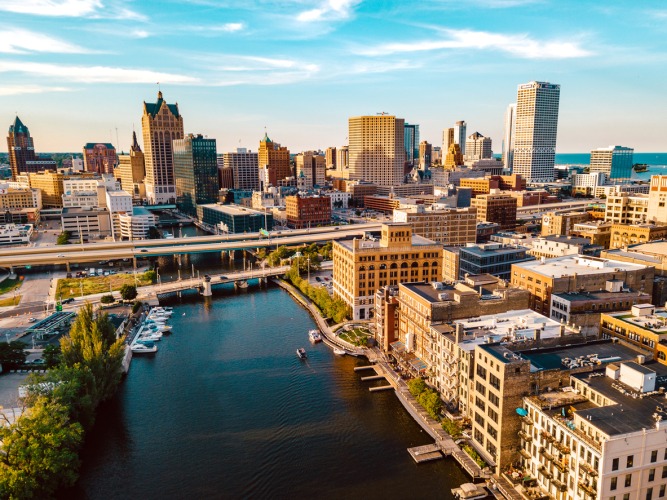
Contents
Pros of Living in Milwaukee, WI
1. Quality of Life
Winters can be harsh, but there are many great qualities about Milwaukee that make it worth the cold months.
There is a strong economy with plenty of jobs.
It has good ratings for healthcare, environment, culture, and more.
It has a solid public transport system and the town is very walkable.
It is not overly expensive and is often included in the best places to live in America.
2. Cost of Living
The cost of living in Milwaukee is 13 percent below the national average.
It is a lot cheaper than Chicago, 93 miles to the south.
If you made $5700 a month in Milwaukee, you would need $7600 in Chicago.
Houses are available for $115,000, far below Chicago or any other large city.
Utility prices are a little above the national average, but gas prices and groceries are below the national average.
3. Education
There are three universities inside the city.
Marquette is a school with a great reputation.
The other two state universities also offer very good education.
There are plenty of opportunities to continue your education as an adult as well.
Overall, public education for kids is good.
Milwaukee’s schools are often rated the best in the state.
Some schools are better than others.
4. The Beer
The old advertising jingle said it was what made Milwaukee famous, and it is true.
A few of the biggest breweries in the country are in Milwaukee.
It does not end there though, because a lot of people want in on the beer-making business.
Milwaukee has at least 30 microbreweries.
There are so many that there are printed guides to help you find them all.
5. Festivals
Milwaukee loves its celebrations, and there are a lot of festivals throughout the year.
There are German festivals due to its strong German heritage.
It is America’s largest Polish festival.
Italians, Irish, Mexicans, and other cultures also hold festivals each year.
The Summerfest is a very big music festival, and there is a barbeque festival late in summer.
There is also an annual pride fest to celebrate LGBTQ people.
You can even start your own festival.
6. Sports
Milwaukee is home to the Major League Baseball Brewers and the NBA’s Bucks.
The Green Bay Packers are not in Milwaukee, but almost everyone is a Cheese head if they leave in Wisconsin.
Marquette’s men’s basketball team is also one of the top teams in the nation most years.
Milwaukee rivals any city in the nation when it comes to professional or college sports.
7. Great Food
The area has a strong German and Polish heritage, so there is a lot of German food around.
Wisconsin makes more cheese than anyone, and any kind of cheese that exists is available in Milwaukee.
There are always new restaurants springing up, and always something new to try.
Add that to the microbreweries, and you have a foodie paradise.
8. Public Transportation
For many cities in the Midwest, the lack of public transportation is a negative, but this is not the case in Milwaukee.
WalletHub ranked Milwaukee fourth in the nation for the safety and reliability of public transport, such as buses or trains.
Milwaukee was ranked 18th overall, but not ranked as highly for convenience.
The downtown area has a streetcar system.
There is a bike-share program too.
Milwaukee is also a very pedestrian and bicycle-friendly city.
Cons of Living in Milwaukee, WI
1. The Weather
The hardest thing about living in Milwaukee is the winter.
The city gets 50 inches or so of snow each winter.
Snow starts in early November and lasts until late March.
There are many days below freezing, and snow can stay on the ground for weeks at a time.
The average high in January is 28, with an average low of 16.
You will likely have to shovel snow and will have to learn to drive on snow.
People who live there get used to it and even thrive in the snow.
2. Crime
Some areas of Milwaukee are just plain dangerous.
The crime rate for the city is four times the national average.
There are 16 violent crimes per 1,000 people, and the national average is four.
The state average is 3.4.
Robbery and assault are several times higher than the national average.
Property crime is also high, double the national average.
In Milwaukee, the property crime rate is 43 per 1,000.
The national average is 19 and the state property crime rate is 15.
3. Road Conditions
Winter and a lot of snow are hard on roads, and they have to be repaired more often than they do in warmer climates.
It may be a challenge to drive in snow, but it can also be a challenge to drive during summer with all the road repairs going on.
Almost half of the year has snow on the ground, so there is a limited amount of time for street crews to get out and fix roads that were damaged by the winter.
4. High Poverty Rate
Milwaukee has one of the highest poverty rates among the nation’s 100 largest cities at 24.5 percent.
This means one in every four people is living in poverty, and many of those people are employed.
In the 1970s, many industrial employers moved away, leaving people unemployed, and that has led to a high poverty rate.
There are jobs if you have the skills for specific jobs, but you have to have those specific skills.
5. Taxes
Wisconsin is not known as a tax-friendly state, and Milwaukee isn’t either.
Milwaukee has the highest property taxes in the state, and Wisconsin has the sixth-highest property taxes in the nation.
There is also a state income tax, based on age, marital status, and income.
About the only break is a lower sales tax, which is 5.5 percent, which is the 18th highest.
6. Wages
The median household income in Milwaukee is $45,000, which is far below the national average of $74,000.
The cost of living may be somewhat lower than in other places, but lower wages make it still relatively expensive.
There are some large corporations and unemployment is only about five percent, but wages remain low.
7. Pollen
Allergy sufferers do not catch a break even with the long harsh winters in Milwaukee.
There is a lot of pollen in the air, and there is a lot of mold, which tends to cause allergies.
In spring and summer, grass, trees, flowers, and other plants cause allergies.
Mold levels rise when there is a lot of rain, or when people are staying inside for long periods of time due to the weather.
8. Traffic
During rush hour, or during one of the many festivals held each year, traffic can become a major problem.
Milwaukee is also known for not having the best drivers.
One poll ranked Milwaukee as the 16th worst city in America for bad drivers.
These are drivers who operate in an unsafe or careless manner that could cause accidents.
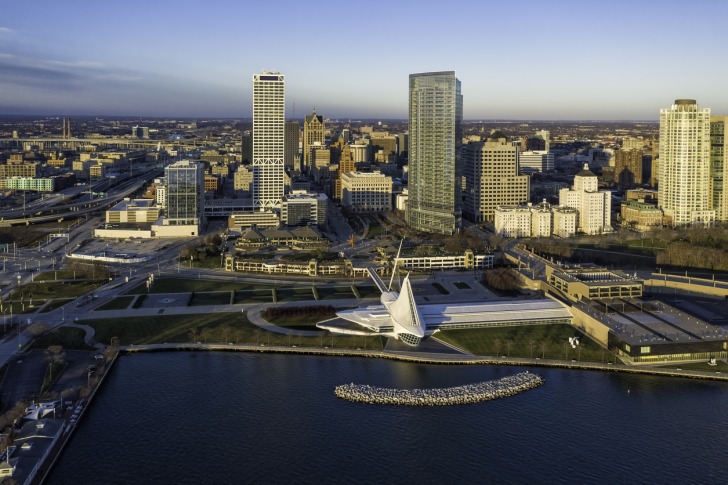
Pros and Cons of Living in Milwaukee, WI – Summary Table
| Pros of Living in Milwaukee, WI | Cons of Living in Milwaukee, WI |
|---|---|
| 1. Quality of Life | 1. The Weather |
| 2. Cost of Living | 2. Crime |
| 3. Education | 3. Road Conditions |
| 4. The Beer | 4. High Poverty Rate |
| 5. Festivals | 5. Taxes |
| 6. Sports | 6. Wages |
| 7. Great Food | 7. Pollen |
| 8. Public Transportation | 8. Traffic |
Milwaukee Safety Overview
READ THE FULL REPORT: Milwaukee Safety Review
Safety Index:
- OVERALL RISK: HIGH
- TRANSPORT & TAXIS RISK: LOW
- PICKPOCKETS RISK: MEDIUM
- NATURAL DISASTERS RISK: MEDIUM
- MUGGING RISK: MEDIUM
- TERRORISM RISK: LOW
- SCAMS RISK: LOW
- WOMEN TRAVELERS RISK: MEDIUM
Frequently Asked Questions
How did Milwaukee get started?
Traders had an outpost on the river leading to Lake Michigan in the late 1700s.
There were several small communities in the area that got together and became what we know today as the city of Milwaukee.
It was officially incorporated in 1846.
It is located at the confluence of three rivers, where they empty into Lake Michigan.
How many miles of trails in Milwaukee?
There are 125 miles of trails in Milwaukee and 150 parks of various sizes.
Miles of coastline are connected by paved trails.
It is also home to the Hank Aaron State Trail, which is 14 miles, going east to west from the lake to the county line.
How is access to Lake Michigan in Milwaukee?
In short, it is excellent, and many say it’s better than in Chicago.
There are several lakefront parks and public areas where you can access the lake.
In downtown, there is Lakeshore State Park.
It has a small beach area on the lake.
There are paved trails that link to other parks along the lakefront in Milwaukee.
How did Wisconsin, and Milwaukee, become famous for making cheese?
Most farmers in the area had dairy farms and produced a lot of milk.
The area was ideal for raising dairy cattle.
To keep the milk from spoiling, they started making cheese.
The first cheese-making company was founded in 1840 not far from Milwaukee.
Why is Milwaukee considered the beer capital of the world?
The four largest beer brewers in America were headquartered in Milwaukee, and the city became famous for beer as a result.
The first brewery opened in 1840, but it was after the Civil War that the four largest beer-making companies in America developed their businesses in Milwaukee.
Today there are more than 30 microbreweries in Milwaukee.
Is Milwaukee growing or shrinking?
In every decade since 1970 Milwaukee has lost residents.
It reached its peak in 1960 with 741,000 people.
The decline has been about five percent each decade since then.
Today the estimated population is 563,000.
The city grew rapidly, as much as 50 percent in a decade, until about 1930.
Even so, its first decline was measured in 1960.
